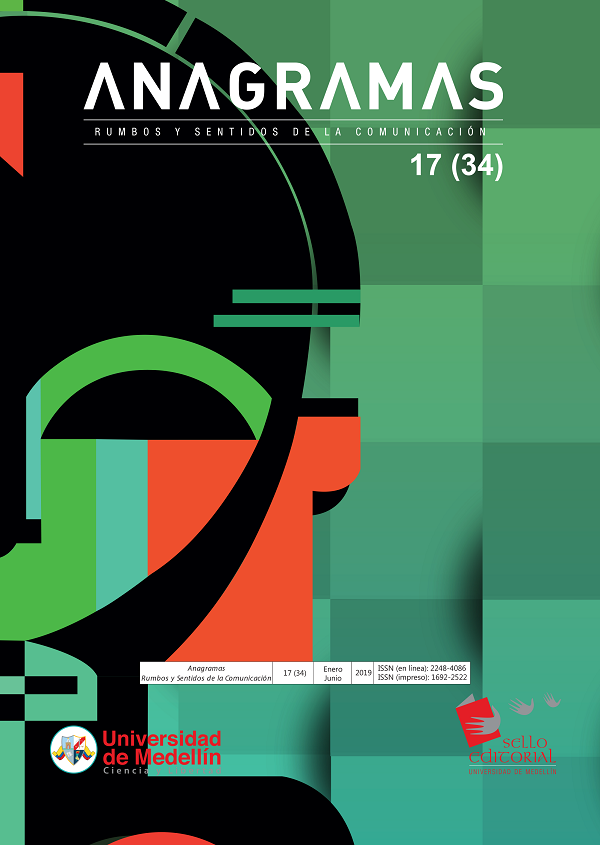Social representations on board the car in Medellín, Colombia
Main Article Content
Abstract
Beyond their monetary value, private cars have a social value that keeps them in use despite the economic and environmental restrictions upon them. This research analyzes the social representations that were built in Medellin (Colombia) around the private vehicle, and why is the use of this luxury good increasing even though the city boasts public transport alternatives. The existing literature on social representations, especially of luxury goods, was reviewed, and semi-structured interviews were conducted with a group of people between 30 and 40 years old who own vehicles for private use that cost at least 50 million of Colombian pesos at the time of their purchase. The discourse analysis of the interviewees allowed to know the social value that people give to private cars. The owners’ assessment of that good goes beyond the concepts of freedom and independence as recognized by the related literature. This research showed that the owners’ first goal is to distance themselves from public transport systems. Car owners understand the car’s symbolic value and foresee the reactions that the good cause on other people, and they use it to build a speech and show themselves as they want to other members of their community. From a sociological point of view, this analysis revealed that car consumption among the aforementioned group of study presents itself an ascending scale that is directly related to the status aspired by the car’s owner.
Article Details
References
Appadurai, A. (1991). La vida social de las cosas. México: Editorial Grijalbo, S.A. de C.V.
Área Metropolitana del Valle de Aburrá. (2015) Inventario de Emisiones Atmosféricas del Valle de Aburrá, año base 2013. Universidad Pontificia Bolivariana, Grupo de Investigaciones Ambientales. Recuperado de www.Metropol.cov.co
Asociación Nacional de Movilidad Sostenible (Andemos). (2017). Informe sector automotor, octubre 2017. Asociación Colombiana de Vehículos Automotores. Recuperado de http://www.andemos.org/index.php/2017/11/02/andemos-informe-sector-automotor-octubre-2017/
BBVA Research (2017). Situación automotriz, Colombia 2017. Recuperado de https://www.bbvaresearch.com/publicaciones/colombia-presentacion-situacion-automotriz-2017/
Blumer, H. (1954). What´s wrong with the social theory. American Sociological Review, (19), 3-10.
Carrete y Arroyo (2013). ¿Cómo diseñar una estrategia de comunicación para vehículos eléctricos? Congreso internacional de Contaduría, Administración e Informática. Recuperado de: http://congreso.investiga.fca.unam.mx/docs/xviii/docs/13.01.pdf
Childe, V. (1984). La evolución social. Madrid: Alianza.
Douglas, M., Isherwood, B. y Mercado, E. (1990). El mundo de los bienes. Ciudad de MeÌxico: Grijalbo.
Durán, D., Chacón, S., Ortegón, L. y Atehortúa, C. (2014). Valor percibido de vehículos de lujo: dimensionalidad e implicaciones en mercadeo (Tesis de maestría). Institución Universitaria Politécnico Grancolombiano, Bogotá, Colombia. Recuperado de http://190.131.241.186/handle/10823/749
Duque, P. (2014). Neuromarketing una herramienta validadora en la toma de decisiones en mercadeo visual-auditivo (Tesis de maestría). Universidad Nacional de Colombia, Manizales. Recuperado de http://www.bdigital.unal.edu.co/40204/
Durkheim, E. (1986). Las reglas del método sociológico. Ciudad de MeÌxico: Fondo de Cultura Económica.
El Colombiano. (2016). Crisis ambiental en el aburrá. Recuperado de http://www.elcolombiano.com/opinion/editoriales/crisis-ambiental-en-el-aburra-BJ3856416
El Colombiano. (2017) Todavía hay tiempo para mejorar la movilidad. Recuperado de http://www.elcolombiano.com/antioquia/movilidad/todavia-hay-tiempo-para-mejorar-la-movilidad-BC7703762
Graves-Brown, P.M. (2000). Matter, Materiality and Modern Culture. Londres: Routledge.
Giucci, G. (2007). La vida cultural del automoÌvil. Bernal: Univ. Nacional de Quilmes.
Kaufmann, V. (2002). Re thinking mobility. Aldershot: Ashgate.
Hennessey, A (2014) Estrategias De Mercadeo Para Impulsar La Comercialización De Carros Eléctricos En Bogotá, Universidad Militar Nueva Granada.
McCracken, G. (1986). Culture and Consumption: A Theoretical Account of the Structure and Movement of the Cultural Meaning of Consumer Goods. The Journal of Consumer Research, 13, 71-84.
Martín Juez, F. (2002). Contribuciones para una antropología del diseño. Barcelona: Editorial Gedisa S.A.
Martínez MigueÌlez, M. (2006). Ciencia y arte en la metodología cualitativa. Ciudad de MeÌxico: Trillas.
Mead, G. H. (1934). Mind, self and society: from the Standpoint of a Social Behaviorist. Chicago: University of Chicago Press.
Moscovici, S. y Duveen, G. (2000). Social representations: explorations in social psychology. Cambridge: Polity.
Morales Quintana, B (2014), Modelo de masificación de vehículos eléctricos en Bogotá D.C. Bogotá D.C., Colombia. Universidad Nacional de Colombia, Departamento de Ingeniería Eléctrica y Electrónica
Programa Medellín Cómo Vamos. (2016). Informe de Calidad de Vida de Medellín 2012–2015. Recuperado de https://www.medellincomovamos.org/download/informe-de-indicadores-objetivossobre-la-calidad-de-vida-en-medellin-2012-2015/
Sahlins, M. (1977) Economía de la edad de piedra. Madrid: Akal Editor.
Sheller, M. (2004). Automotive emotions: feeling the car. Theory, Culture y Society, 21, 25-39.
Urry, J. (2003). Inhabiting the Car. Department of Sociology at Lancaster University. Recuperado de http://www.lancaster.ac.uk/fass/resources/sociology-online-papers/papers/urry-inhabiting-the-car.pdf
Urry, J. (2004) 'The ‘System’ of Automobility', Revista Theory, Culture y Society, Volumen 21, p 221-242, Lóndres, Inglaterra.
Vallejo, F. y López, Z. (2016). Entrevista al ingeniero Jorge Barrera. Recuperada de https://youtu.be/1fesqdY2u3I





